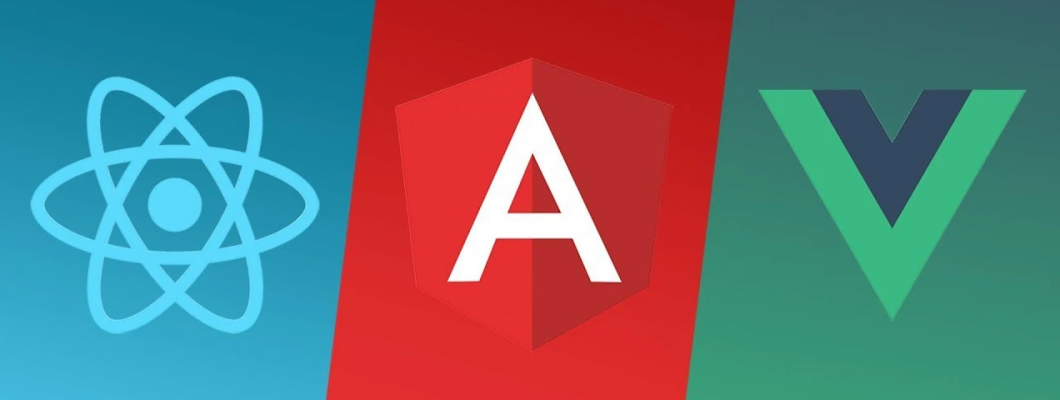
In today’s dynamic and rapidly evolving web development landscape, selecting the right front-end framework is more important than ever. With users demanding faster, smoother, and more engaging digital experiences, the tools you choose can significantly impact the performance, maintainability, and scalability of your application. Whether you're developing a responsive single-page application (SPA), a complex eCommerce site, or a modular enterprise dashboard, your framework sets the foundation for success. Each framework offers distinct advantages: React brings a vast ecosystem and component reusability; Vue is lauded for its simplicity and flexibility; Angular provides a comprehensive solution suited for enterprise-grade applications. Meanwhile, modern challengers like Svelte and SolidJS are gaining attention for their impressive performance and lightweight approach.
This comparative guide explores the strengths, limitations, and ideal use cases for each of these popular and emerging frameworks in 2025. By understanding their core features, development philosophy, and ecosystem support, you can choose a solution that aligns with your project goals, team expertise, and long-term maintenance strategy. Whether you’re a startup founder, a solo developer, or part of a large tech team, this showdown will help you confidently navigate your front-end tech stack decisions.
1. React: The Industry Standard
Overview:
Created by Facebook, React is a component-based JavaScript library known for its simplicity and vast ecosystem. It’s widely adopted across startups and enterprises alike.
Why Choose React?
Virtual DOM for efficient rendering.
Huge community and third-party libraries.
Backed by Meta (Facebook).
JSX syntax blends HTML with JavaScript logic.
Integrates well with Next.js, Redux, React Native, and more.
Best For:
Scalable SPAs
Complex UIs
Teams that prioritize component reusability
Limitations:
Requires additional libraries for routing and state management.
Steeper learning curve for beginners compared to Vue.
2. Vue.js: The Progressive Framework
Overview:
Vue.js was designed to be a more approachable framework, combining the best of Angular and React. It’s especially popular among individual developers and small teams.
Why Choose Vue?
Simple syntax and low learning curve.
Built-in tools for routing and state management (Vuex).
Great documentation and flexibility.
Used by Alibaba, Xiaomi, and other tech giants.
Best For:
New developers
Lightweight web apps
Projects where speed and flexibility are key
Limitations:
Smaller ecosystem than React or Angular.
Not as widely used in large-scale enterprise environments.
3. Angular: The Enterprise Heavyweight
Overview:
Angular, developed by Google, is a full-fledged front-end framework with strong opinions on how apps should be structured. It uses TypeScript and is known for its scalability.
Why Choose Angular?
Complete solution with built-in tools (routing, forms, HTTP, testing).
Strong TypeScript support is provided by default.
Ideal for large enterprise applications.
Backed by Google and used in their products.
Best For:
Large teams
Enterprise-level applications
Projects needing out-of-the-box structure
Limitations:
Steeper learning curve due to complex concepts like dependency injection.
Verbose syntax compared to Vue or React.
4. Svelte: The Compiler-Based Disruptor
Overview:
Unlike traditional frameworks, Svelte shifts the work from the browser to the build process. It compiles your code to efficient vanilla JavaScript, reducing runtime overhead.
Why Choose Svelte?
No virtual DOM = faster performance.
Smaller bundle size.
Clean and readable syntax.
Lightweight and fast out of the box.
Best For:
Small to mid-sized apps
Performance-focused applications
Developers who want modern syntax without complex tooling
Limitations:
Smaller community and ecosystem.
Limited tooling compared to React and Angular.
5. SolidJS: The Fastest Newcomer
Overview:
SolidJS is gaining traction in the developer community thanks to its blazing-fast performance and reactivity system. It also uses a JSX syntax like React, but compiles it to fine-grained reactive code.
Why Choose SolidJS?
Best-in-class performance benchmarks.
Fine-grained reactivity with a minimal runtime.
Familiar React-like syntax for easy onboarding.
Best For:
Developers want React-like development but with better performance.
Future-facing projects experimenting with bleeding-edge tech.
Limitations:
Smaller community and fewer learning resources.
Not yet widely adopted in production environments.
Feature Comparison Table
How to Choose the Right Framework
1. Consider Team Experience
If your team already knows React, stick with it for faster development.
For newer teams or freelancers, Vue offers a gentle learning curve.
If you're working with a strict enterprise architecture, Angular could be a better choice.
2. Evaluate Project Requirements
Real-time apps? Go for frameworks with great reactivity (Vue, Svelte).
Performance-critical apps? Svelte or SolidJS are excellent.
Scalability and tooling? React and Angular are your go-to.
3. Think Long-Term
A large ecosystem means better community support, plugins, and job opportunities.
Stability and long-term maintenance are essential for enterprise applications.
The Future of Front-End Development
In 2025, trends like server-side rendering (SSR), static site generation (SSG), and isomorphic apps are shaping how frameworks evolve.
Tools like Next.js (React), Nuxt.js (Vue), and Angular Universal are bridging the gap between client and server rendering.
Meanwhile, frameworks like Qwik and Astro are pushing boundaries with partial hydration and edge-optimized delivery, signaling a move toward faster, leaner experiences.
Conclusion
There’s no “one-size-fits-all” solution when it comes to front-end frameworks. Each comes with its strengths, weaknesses, and best use cases.
React remains the go-to for robust ecosystems and scalable apps.
Vue shines in flexibility and approachability.
Angular offers everything out of the box for enterprise-level solutions.
Svelte and SolidJS point to a performance-optimized future that removes runtime bloat.
Choosing the right tool depends on your goals, your team, and your users. So, whether you’re prototyping a startup idea or building the next big SaaS platform, choose wisely and build boldly.

Leave a Comment